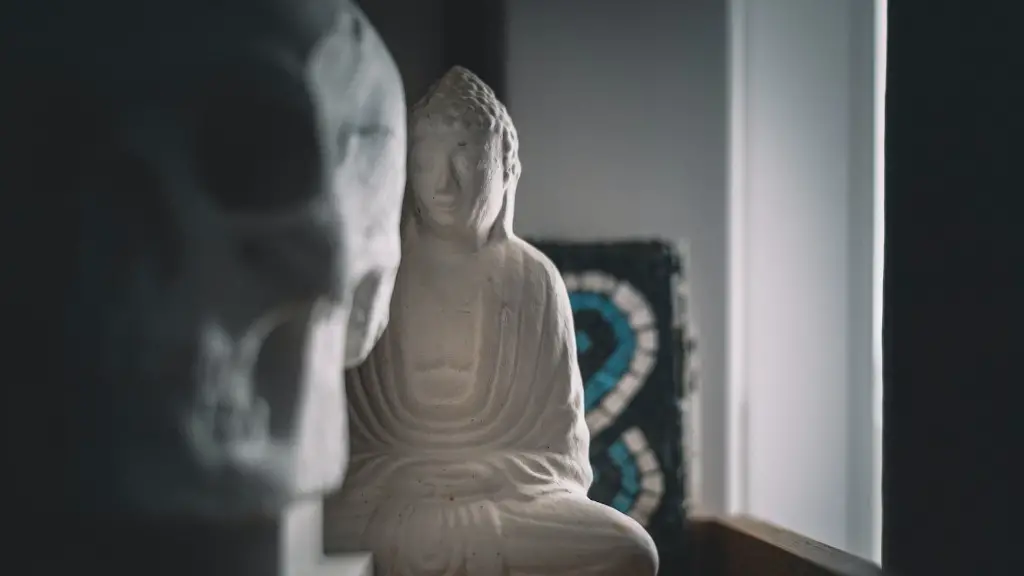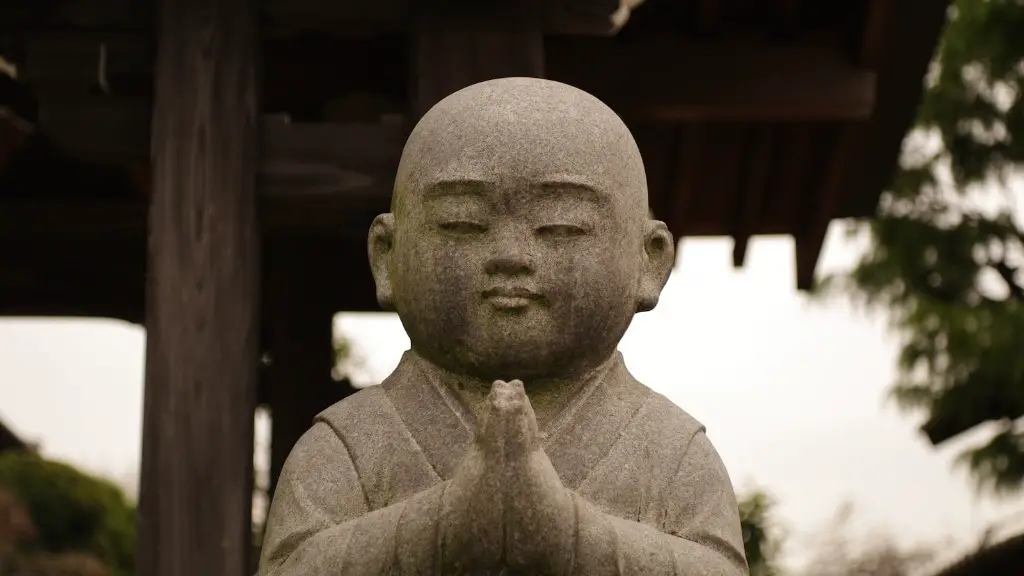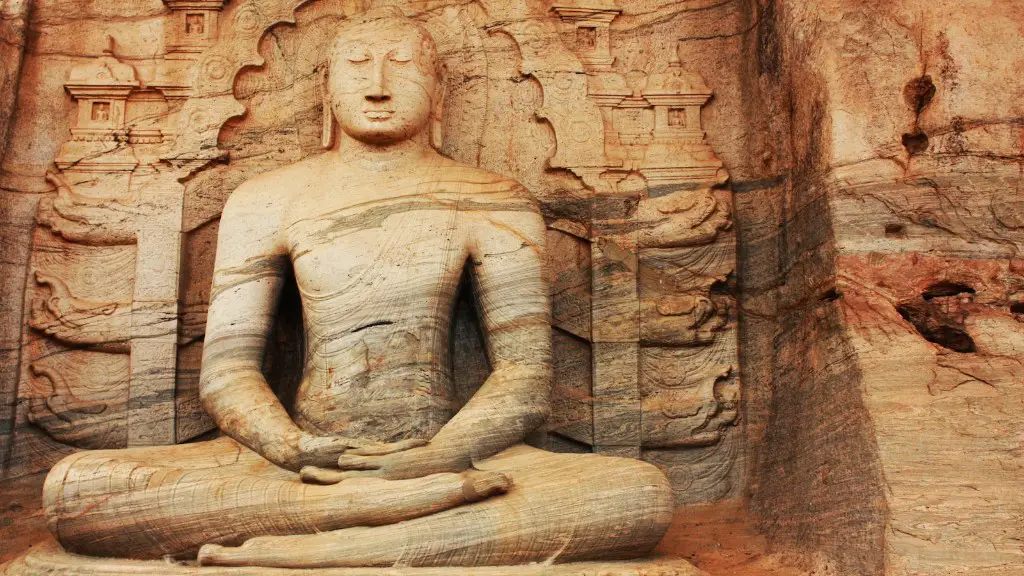Anatta is a key concept in Buddhism which refers to the idea that there is no permanent, unchanging “self” or “soul”. This concept is central to the Buddhist understanding of spiritual development and is often contrasted with views that emphasize the existence of a permanent self.
In Buddhism, the doctrine of anatta, or “not-self”, is the teaching that there is no unchanging, permanent self, soul or essence in living beings. This doctrine is an important part of the Buddhist concept of rebirth, which holds that there is no permanent, continuous self that transmigrates from one life to the next. Instead, what is reborn is a new being, with no consciousness of any past lives. The anatta doctrine is also a fundamental part of the Buddhist understanding of suffering (dukkha), which holds that because there is no permanent self, there is also no permanent happiness or satisfaction to be found in life.
What do Buddhists mean by anatta?
The Buddha taught that people have no soul because nothing is permanent and everything changes. This means that the self is an illusion and that humans are not really in control of their own lives. Instead, we are controlled by our desires and our environment.
Anatta is a Buddhist concept that explains that there exists no permanent self or soul. The term comes from the Pali language and translates as “non-self” or “without substance”. Anatta is one of the three essential doctrines in Buddhism, the other two being anicca (impermanence of all existence) and dukka (suffering).
What do Buddhists mean by no self
The Buddhist view of the nature of self is the rejection of the unified essential self, called the doctrine of no-self (anatta). The doctrine argues that the “self is nothing more than a bundle of states and properties beneath which we tend to project a fiction of an enduring self”. This means that there is no permanent, unified self that exists independently from the states and properties that make it up. Instead, the self is constantly changing and is only a temporary collection of fleeting states and properties. This doctrine is significant because it challenges the common belief that there is a unified, permanent self that endures through time.
The Five Skandhas are the five aspects of our being that we experience the world through. They are: form (the body and senses), sensations, perception, volition, and consciousness. We experience the world through the Five Skandhas and as a result, cling to things and experience suffering.
Do Buddhists believe there is no-self?
From the Buddhist perspective, the idea of “individual self” is an illusion. It is not possible to separate self from its surroundings. Buddha in Lankavatara Sutra states, “Things are not what they seem… Deeds exist, but no doer can be found” (Majjhima Nikaya, 192).
The Buddha’s teaching of anatta, or not-self, is often perplexing to people. One reason is because the word “self” is used in many different ways in different religions, schools of psychotherapy, and philosophy, as well as in everyday language. The Buddha’s teaching of anatta helps us to see that there is no single, permanent, unchanging self that we can identify with. Instead, we are constantly changing, and our sense of self is just a construct that we create.
Is anatta an impermanence?
Anicca, or impermanence, is one of the key concepts in Buddhism. It means that everything is constantly changing and that nothing is permanent. This includes our thoughts, emotions, and physical bodies. Because nothing is permanent, it can be difficult to find lasting happiness. This is where the concept of dukkha, or dissatisfaction, comes in. Dukkha means that everything leads to suffering because nothing is permanent. This includes both Suffering (the bad things that happen to us) and Dukkha (the feeling that everything is always changing and we can never be truly happy). Anatta, or no soul, is another important concept in Buddhism. It means that there is no permanent soul or Self. We are constantly changing and our identity is not fixed. This can be a difficult concept to understand, but it is a key part of the Buddhist teachings.
In Buddhist philosophy, anatta (Pāli) or anātman (Sanskrit) refers to “non-self” or “absence of separate self”. This is in contrast to the notion of Atta (Pāli) or Ātman (Sanskrit), which is the idea of a permanent Soul or Self that survives transmigration. The Buddha explicitly rejects the notion of a permanent Soul or Self.
What are the 4 Buddhist truths
The Four Noble Truths are the cornerstone of Buddha’s teachings, and though they leave much unexplained, they provide a great deal of wisdom and guidance. The first truth is that suffering exists and is an inescapable part of life. The second truth is that the cause of suffering is our grasping and attachment to things that are impermanent. The third truth is that freedom from suffering is possible, but it requires letting go of our attachments. The fourth truth is the path that leads to the end of suffering, which is the Eightfold Path.
In order to be truly free, one must be willing to let go of the “self” – the ego that tells us we are separate and alone. This is what is known as “laying down the burden” in Buddhism. It is something that the Buddha and his Awakened disciples did, and something that all Buddhists aspire to do in their own practice. It is not easy, and requires a great deal of courage. It involves sacrificing what we cherish most – the feeling of “being” special and separate from others. But in doing so, we find true freedom.
How do you break the illusion of yourself?
It can be easy to get caught up in the illusion of who we think we are supposed to be. We may view ourselves one way when we’re at work, another way when we’re with our friends, and yet another way when we’re at home. But if we’re not careful, we can get so caught up in these different versions of ourselves that we forget who we really are.
Instead, it’s important to recognize all of our different selves. We can do this by bringing awareness to the labels of the “interpreter” through mindfulness practice. By doing this, we can begin to see glimpses of the “non-self” – the true Self that lies beyond the illusion. And, as we start to see beyond the illusion, we may find that we are more than we ever thought possible.
The historical Buddha taught that there is no permanent, autonomous “I” that inhabits our bodies. Instead, what we imagine to be “I” is an effect created by our brains and senses that is re-created anew every moment.
What is the difference between atman and anatta
Both anatta and Atman are important concepts in Buddhist and Hindu thought, respectively. Anatta points to the fact that there is no separate, personal self that “holds together” the lived experience of any psycho-physical organism. Atman, on the other hand, gives us an ultimate, positive answer to the question of what our ultimate concern should be.
The Five Precepts are basic guidelines for living a moral and ethical life. By following these precepts, we can avoid causing harm to others and ourselves. The first precept is to refrain from taking life. This means not killing any living being, including animals. The second precept is to refrain from taking what is not given. This means not stealing from anyone. The third precept is to refrain from the misuse of the senses. This means not having too much sensual pleasure, such as from watching television or eating junk food. The fourth precept is to refrain from wrong speech. This means not telling lies or gossiping about others. The fifth precept is to refrain from intoxicants that cloud the mind. This means not drinking alcohol or taking drugs.
What atman means?
The Atman is the essential self or core of the personality. It is eternal and identical with the eternal core of the universe. After death, the Atman either transmigrates to a new life or attains release from the bonds of existence.
Buddhism is often categorized as a religion, but it is more accurately described as a spiritual tradition. The core tenet of Buddhism is the Four Noble Truths, which state that suffering is an inherent part of life, that suffering is caused by attachment, that suffering can be mitigated by detachment, and that there is a path to liberation from suffering.
There is no belief in a personal god in Buddhism, nor is there any belief in an afterlife. The Buddha himself rejected the idea of a creator god, and Buddhist philosophers have even argued that belief in an eternal god is nothing but a distraction for humans seeking enlightenment.
Buddhism is a nontheistic tradition that is focused on spiritual liberation. If you are seeking a religion that is based on the belief in a personal god, then Buddhism is not the tradition for you.
Do Buddhists think there is a god
Siddhartha Gautama is believed to be the first person to achieve enlightenment and is known as the Buddha. Buddhists do not believe in any kind of deity or god, although there are supernatural figures who can help or hinder people on the path towards enlightenment.
In Buddhism, there is no concept of punishment or reward. There is no divine being who decides who goes to hell or heaven. There is merely the illusory results of our thought, words and deeds, which we call karma.
Warp Up
Anatta, or “not-self”, is a central principle of Buddhism that states that there is no permanent, unchanging self or soul. This means that, unlike in many other religions, there is no need to believe in a personal god or an afterlife. Instead, Buddhists believe that it is our actions in this life that determine our future.
Anatta, or “not-self” is a central concept in Buddhism that denies the existence of a permanent, independent self or soul. This doctrine is one of the three marks of existence, along with dukkha (suffering) and anicca (impermanence). The denial of anatta is said to be the cause of suffering, as it leads to grasping and attachment.




